June 19, 2025
Garden Design: Plant Communities for Wildlife
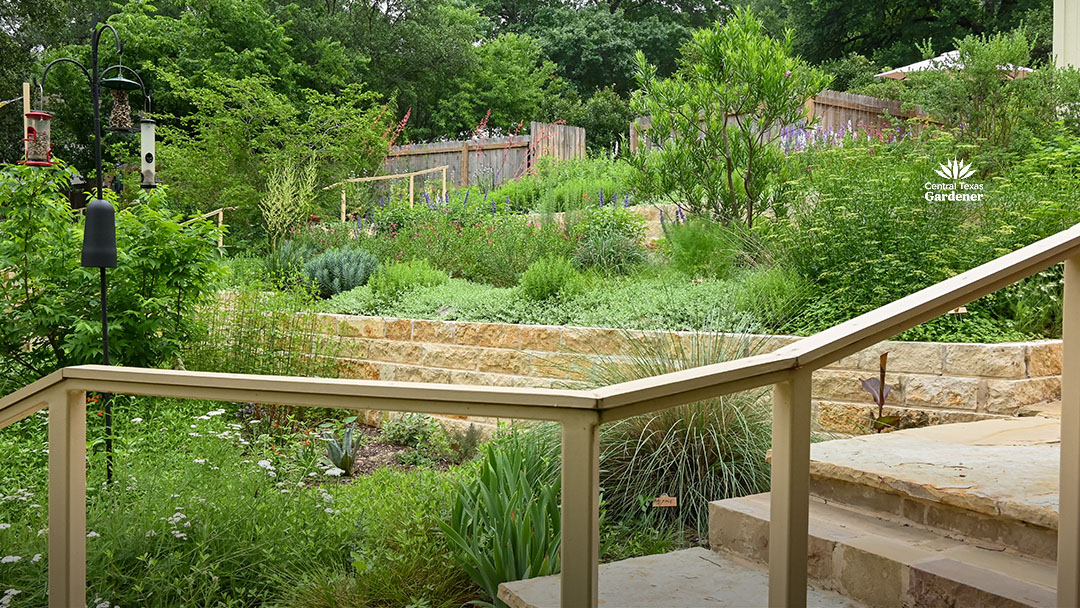
When Jo Clifton and Roger Duncan bought the property next door, they envisioned an urban wildlife sanctuary linked to their garden. “We were very aware of the problems with pollinators. So we wanted to focus on it being a pollinator garden,” they told us when we visited in May.
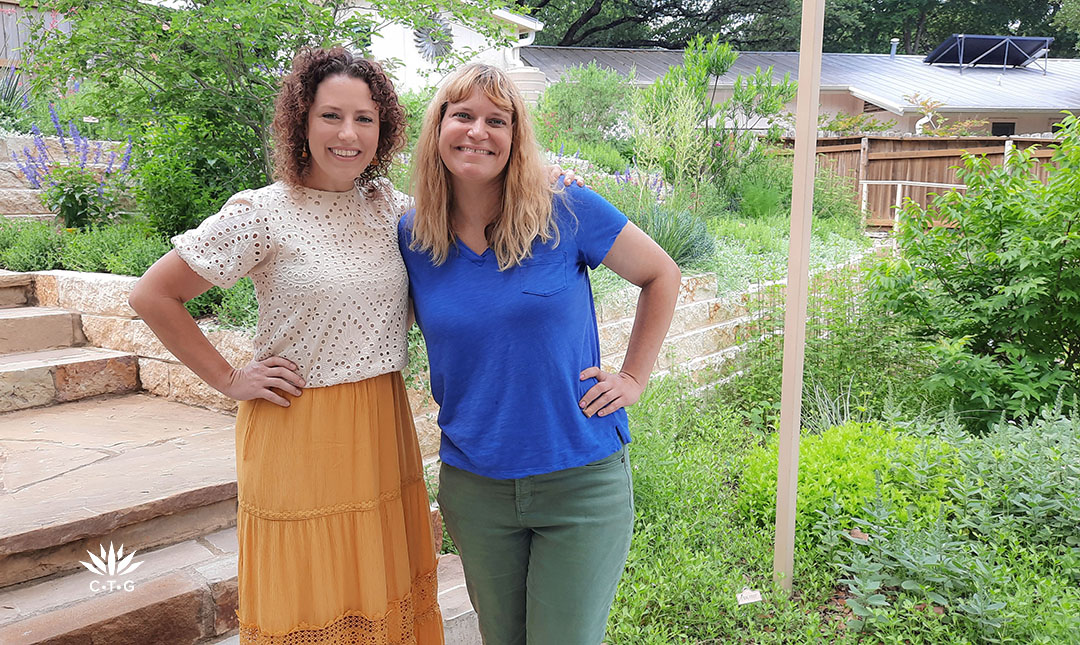
Enter landscape designers Leah Churner and Holly Gardovsky of Delta Dawn Gardens. The old house sat on an eight-foot slab. “So we knew that it was going to be a big grade change, and we knew there was going to have to be quite a bit of terracing involved to keep the ground from eroding,” Leah said.
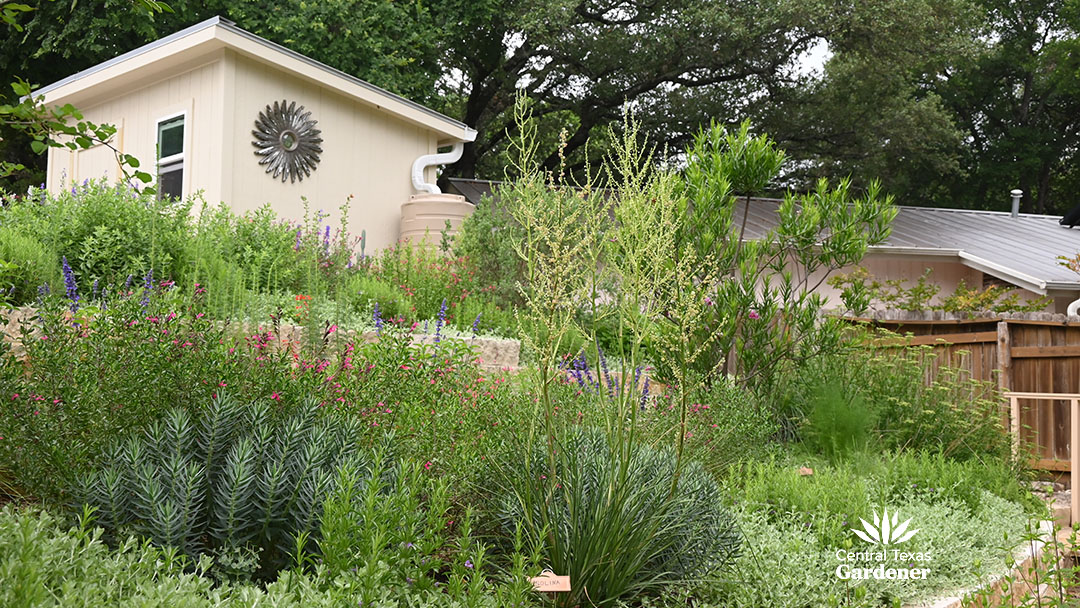
Seedlings Landscape Design Build beautifully crafted a series of raised limestone beds on the dramatic slope. Then, Leah and Holly layered a matrix of Texas tough plants geared for wildlife, including larval host plants for butterflies and moths.
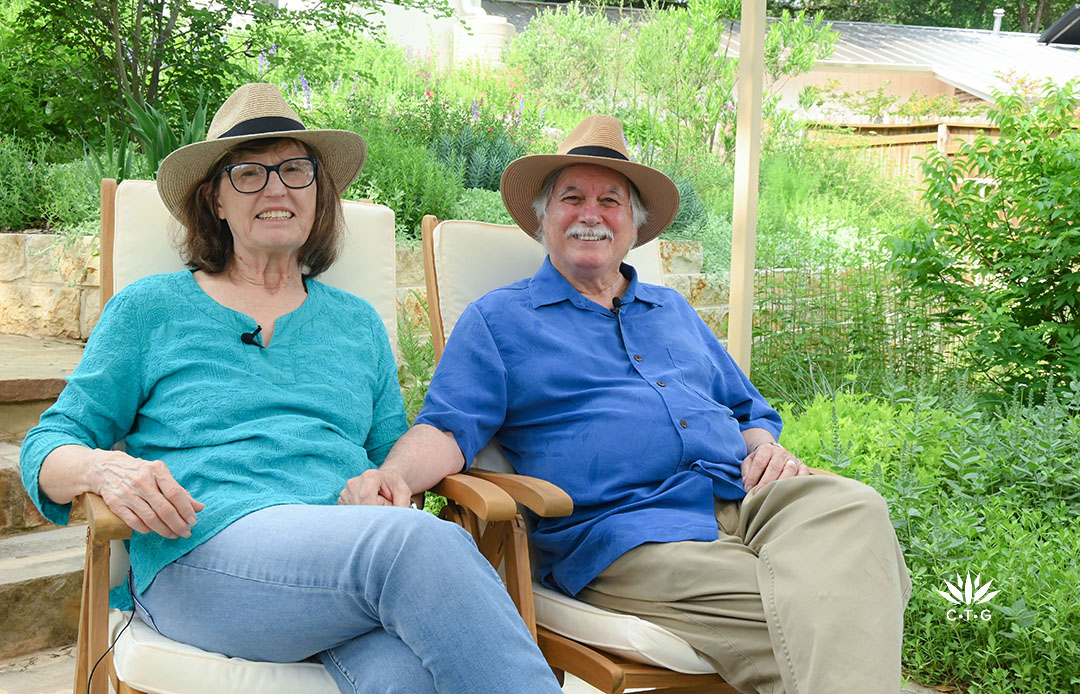
Roger and Jo bought their house 30 years ago and had gradually developed its garden with Leah and Holly. When the house next door went up for sale, they jumped at the chance to develop more habitat for birds, insects, and other wildlife.
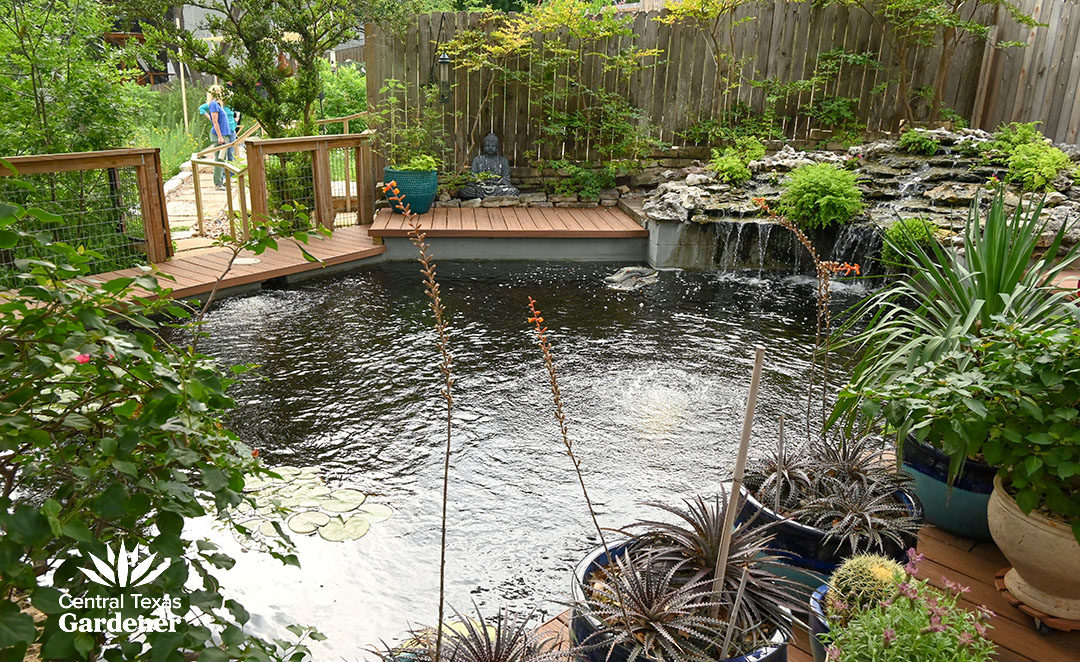
Their backyard connects to the new garden. The wildlife loves their pond, designed by Taylormade Waterscapes from a former swimming pool. A large cistern (out of view) supplies the water. “And, it became a very active little ecosystem. We have frogs now and dragonflies and lots of birds,” Roger said.
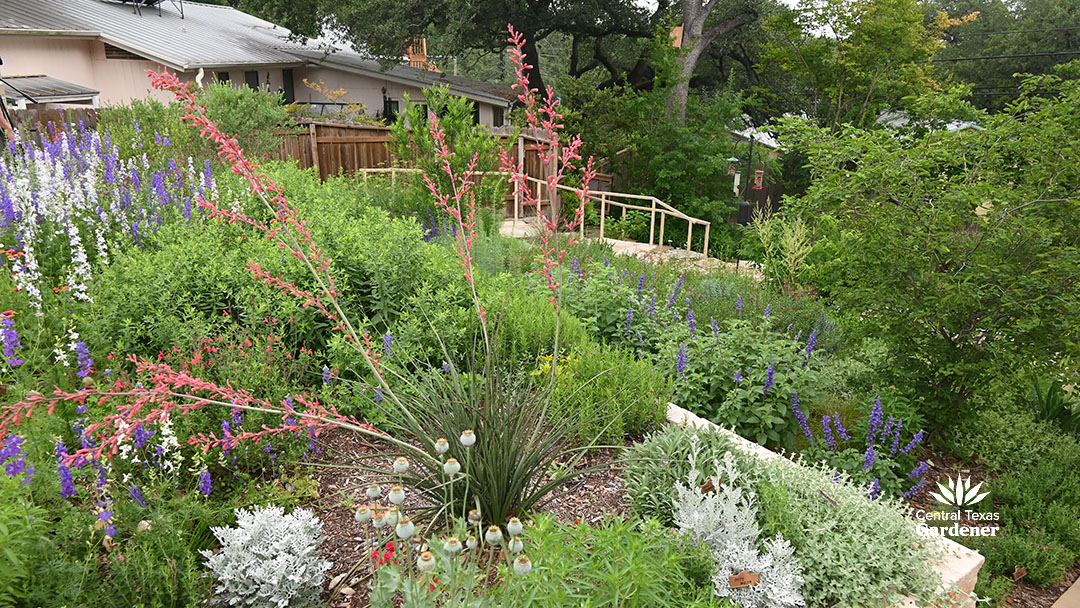
The old house was torn down in spring 2023. Seedlings constructed the hardscape in summer 2023, and Delta Dawn started planting in fall 2023. Although still very young, perennials are filling in among small trees and groundcovers. Here, red yucca joins ‘Mystic Spires’ salvia, larkspur, poppies going to seed, and anacacho orchid.
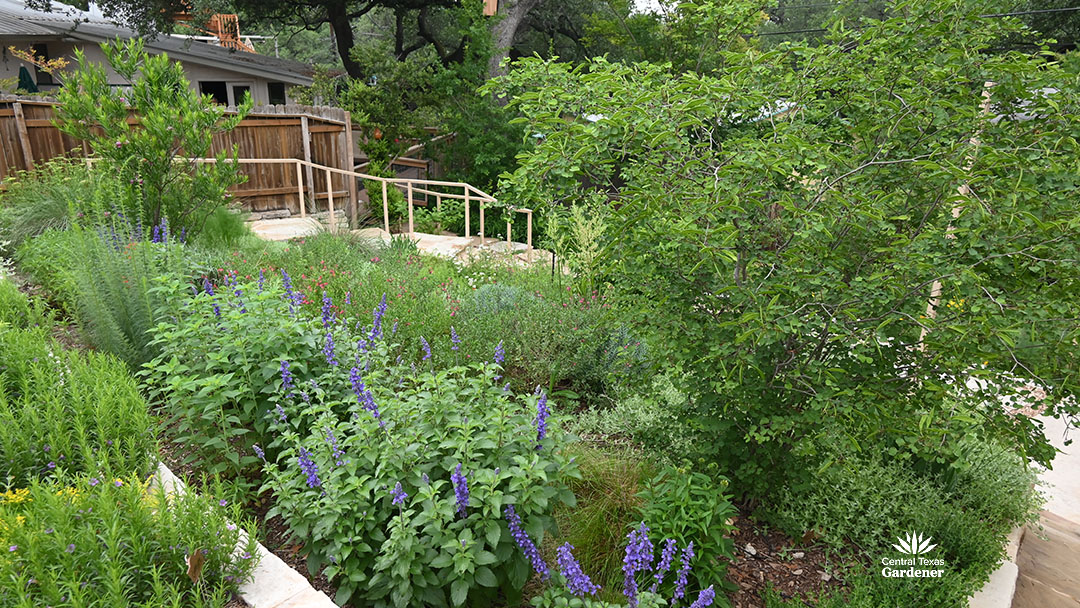
Leah really focused on selecting plants that support caterpillars to feed baby birds and wasps, as well as adult butterflies and moths. ‘Mystic Spires’ salvia isn’t native, but bumble bees race to its large flowers, as do hummingbirds and butterflies. Desert willow (to the left) also attracts hummingbirds and is the larval host for the white-winged moth. Anacacho orchid (to the right) is the larval host for the long-tailed skipper butterfly.
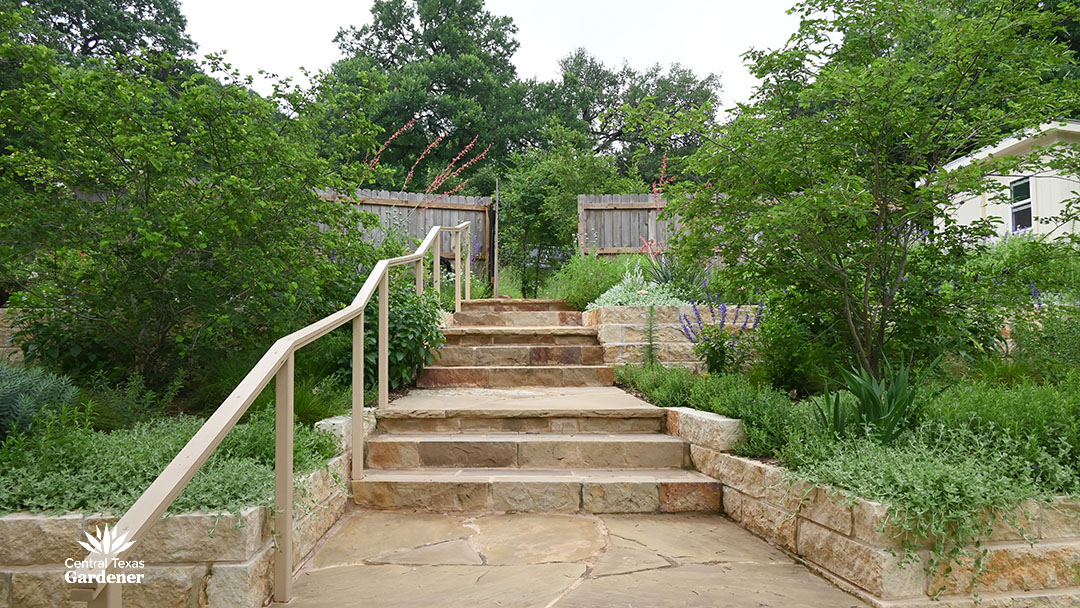
Roger had envisioned a central staircase to bisect the garden. Leah framed its passage with native anacacho orchid trees.

Seedlings chose sandstone for stepping stones since they’re less slippery. Along the upper pathway, Leah and Holly seeded larkspur and native standing cypress, another hummingbird summertime favorite. A cultivar of gallardia blooms for months.
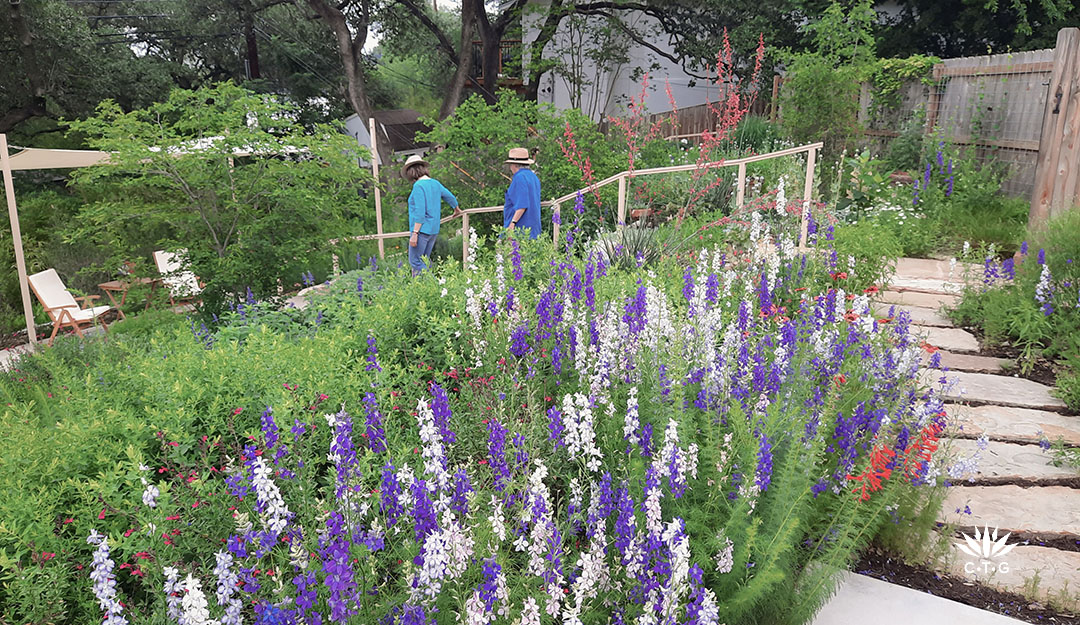
In May, Salvia greggii and late spring flowers dominated, along with ‘Mystic Spires.’ In fall, asters join in, along with a salvia resurgence.
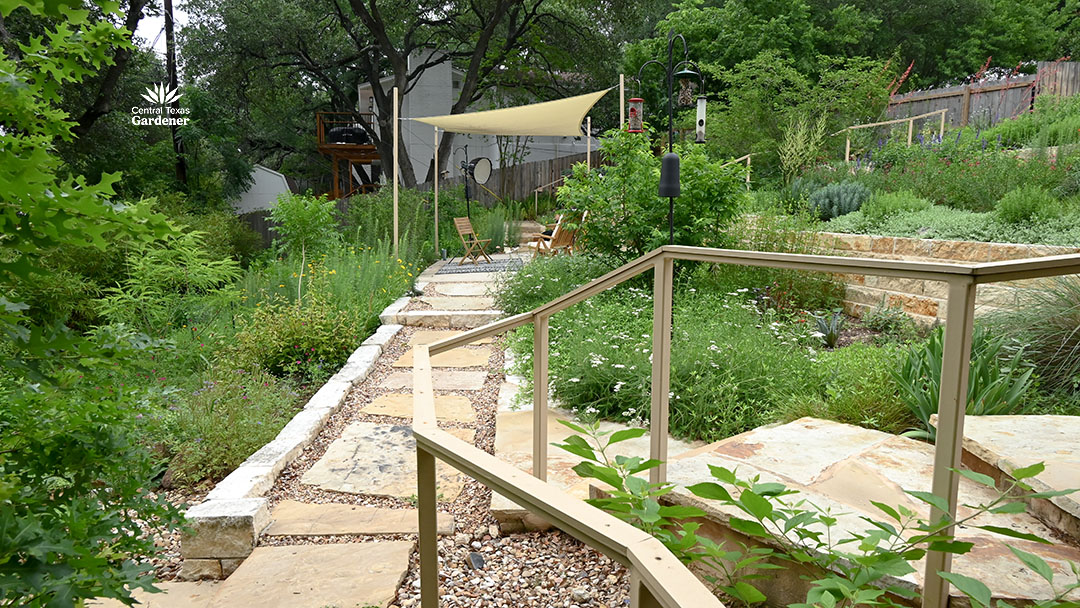
The staircase leads to a walkway that runs below the terraced beds. Yarrow was in full bloom on our visit, and is also a larval host for many butterflies and moths.
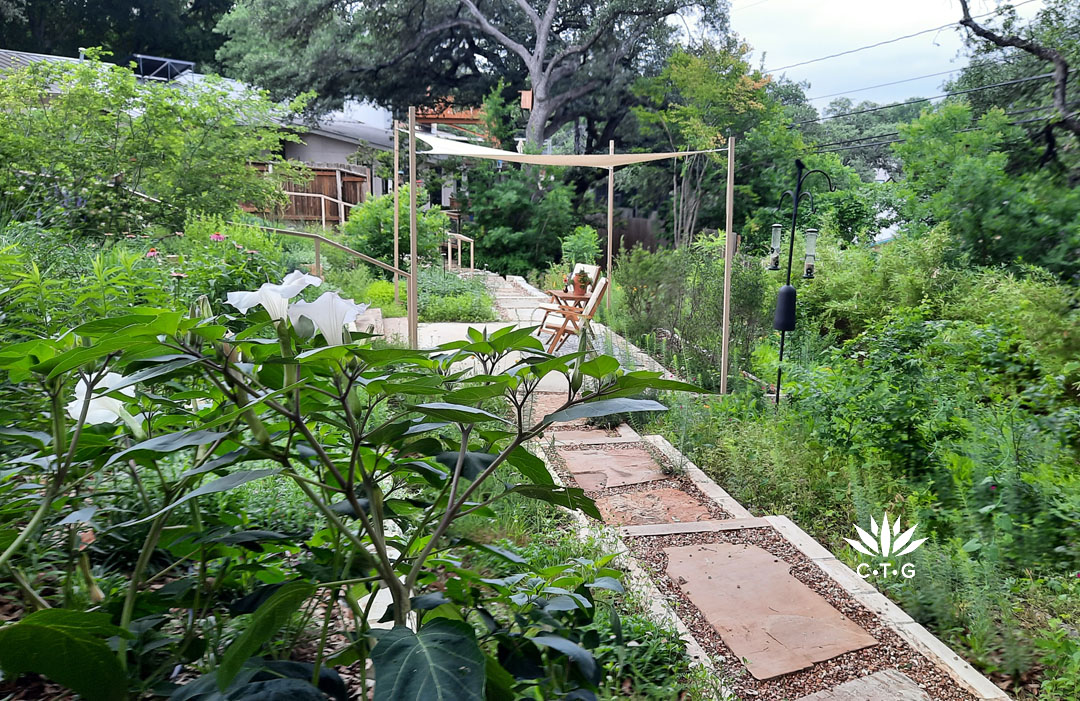
The path also connects to Jo and Roger’s backyard. In the foreground, fragrant datura attracts many pollinators by day. At night, Carolina sphinx moth dips into those billowy flowers and females lay their eggs on this host plant. Then, bats may swoop in on the moths—full cycle by moonlight. On the right, Delta Dawn planted a variety of native small trees joined by native plants that showed up on their own.
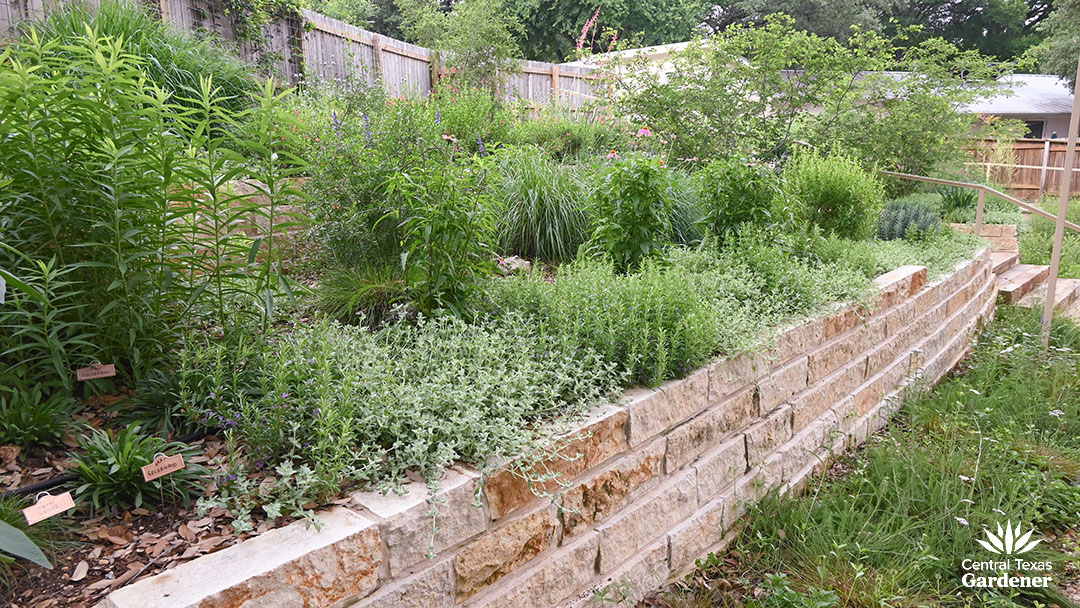
“We kind of came up with this idea for creating plant communities, creating a matrix planting of plant communities. Each area has a ground cover and then like a small grass, like a sedge and then, some like lower perennials and then there’s some, some shrubs in each,” Leah explained. For more about matrix designs, watch our conversation with Benjamin Vogt, author of Prairie Up!
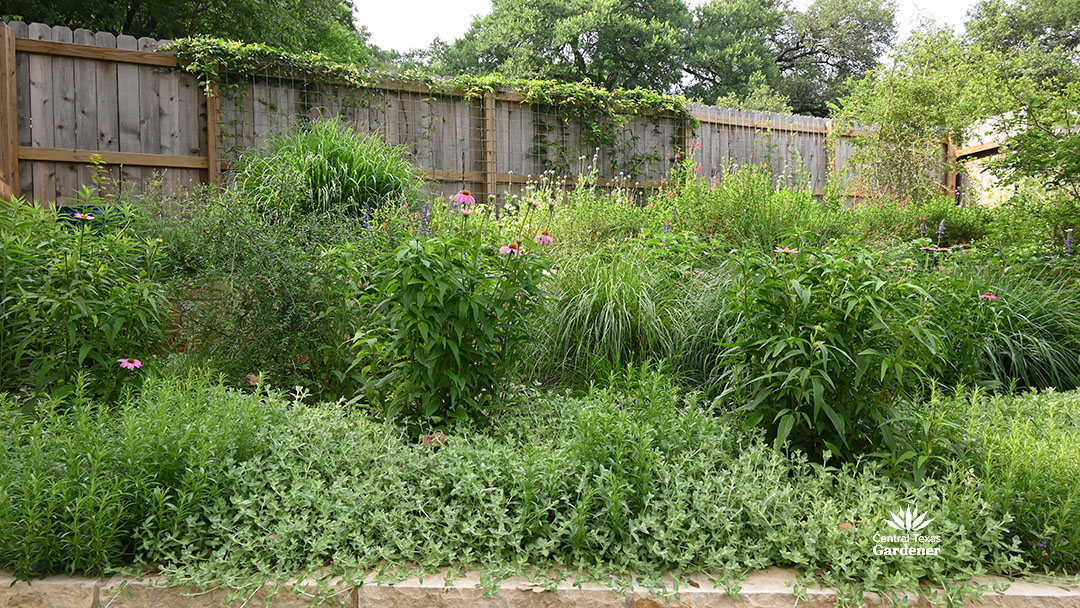
Here, we’ve got goldenrod, prairie goldenrod, little bluestem, purple coneflower, Lindheimer muhly and flame acanthus. At the edge: snake herb and woolly stemodia that will drape over the walls by mid-summer.
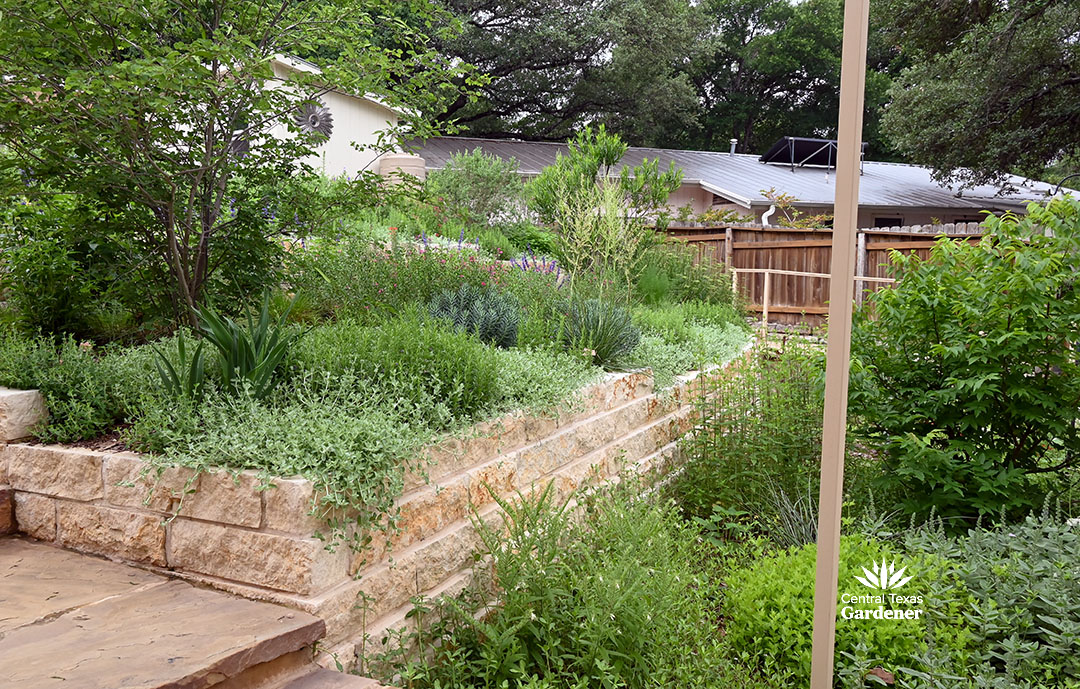
Leah and Holly unite the terraces with more woolly stemodia and snake herb on the other side. They tuck in gopher plant (Euphorbia rigida) and blooming Nolina lindheimeriana.
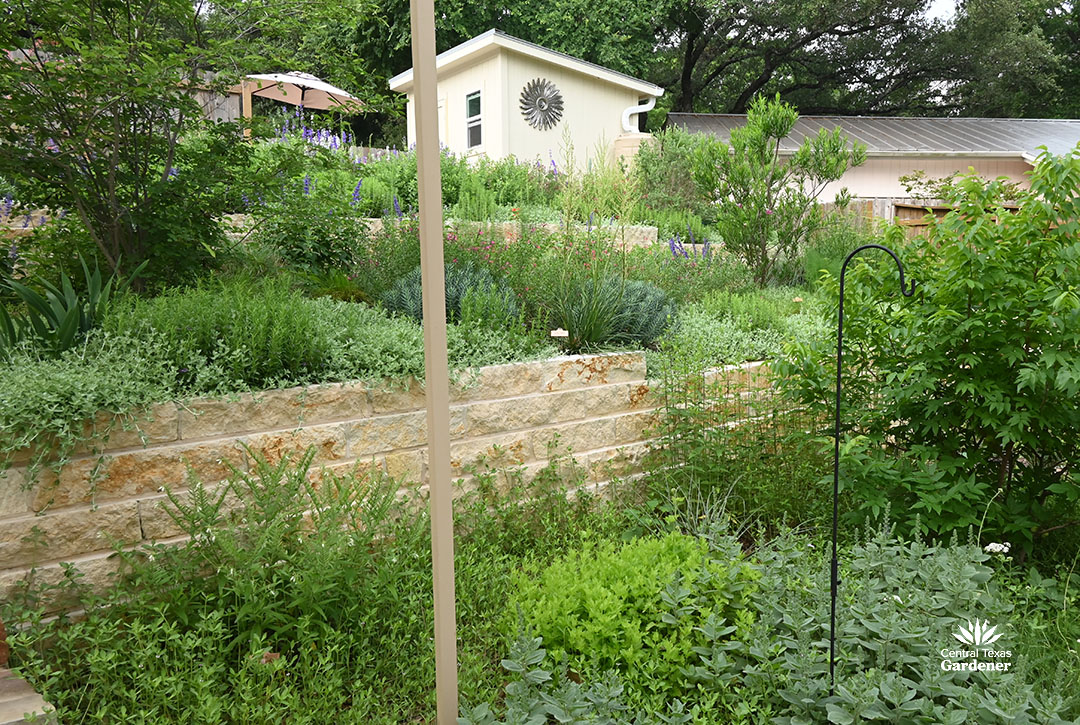
Below, groundcovers soft-hair marbleseed, frogfruit, heartleaf skullcap, and Gregg’s mistflower tumble together in a collage of texture, color, and seasonal flowering. Mexican buckeye beyond.
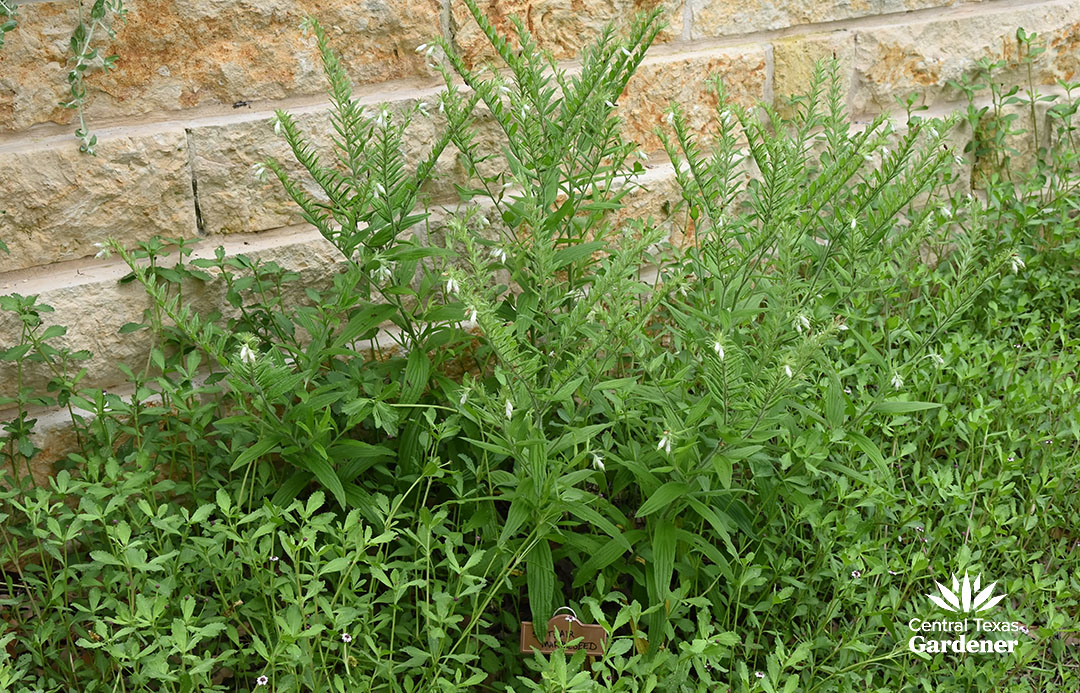
William Glenn of Greensleeves Nursery introduced us to soft-hair marbleseed on Backyard Basics earlier this year.
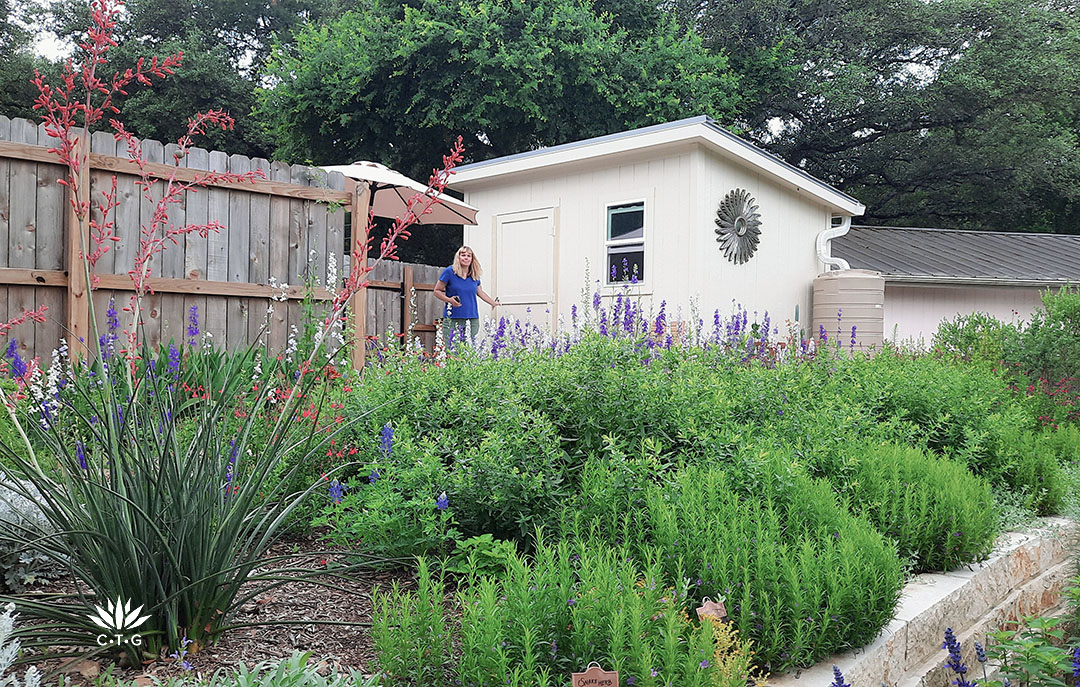
Visit this garden in person on the 2025 Garden Conservancy Austin Open Days tour on November 8. Online tickets open on September 2. We will preview all the gardens on our October 18 episode with Sarah Yant and Bethany Broussard of Twistleaf Land Design.
Thank you for stopping by!
tags:

